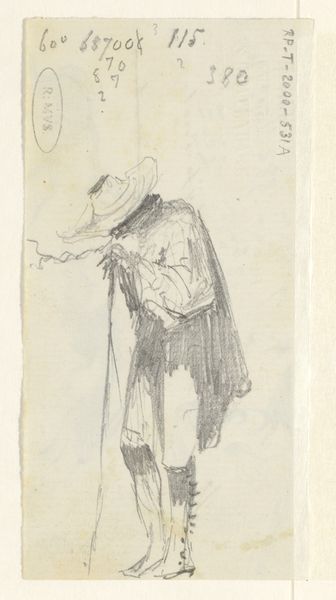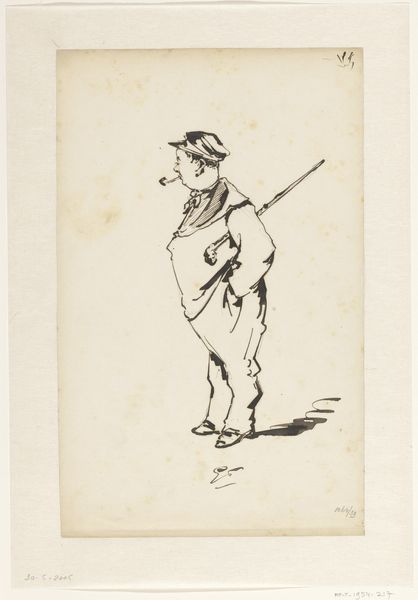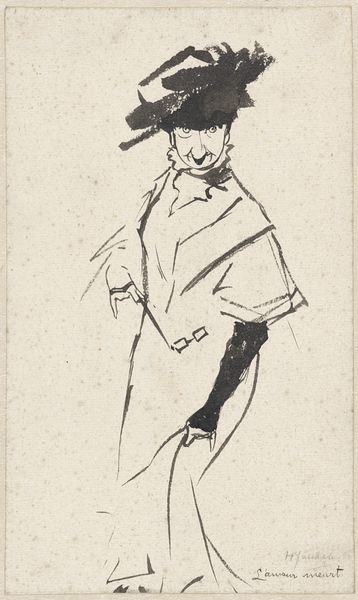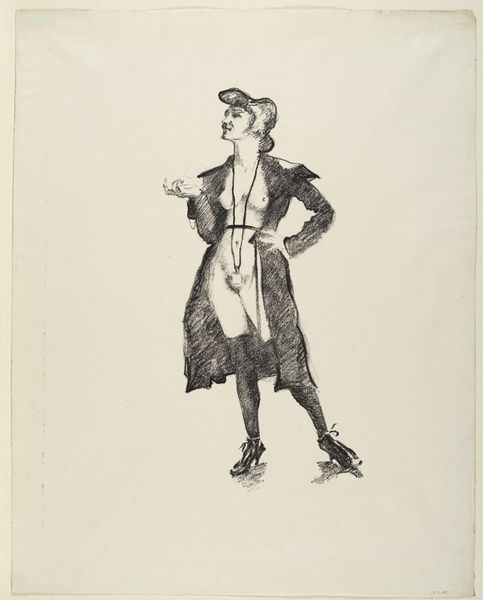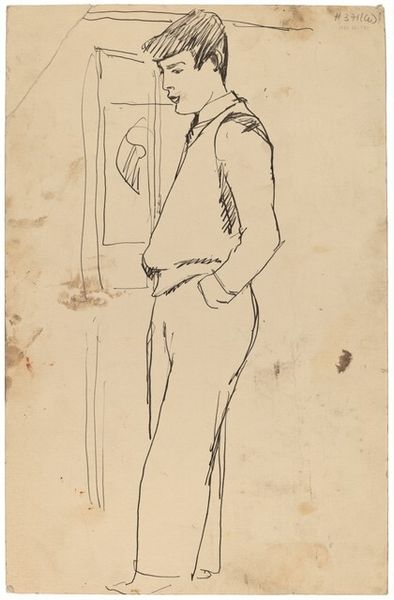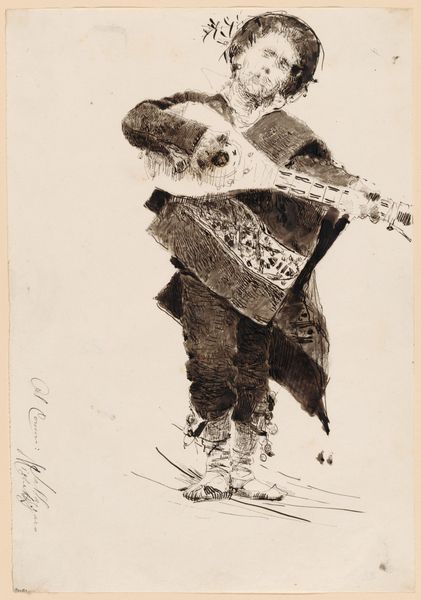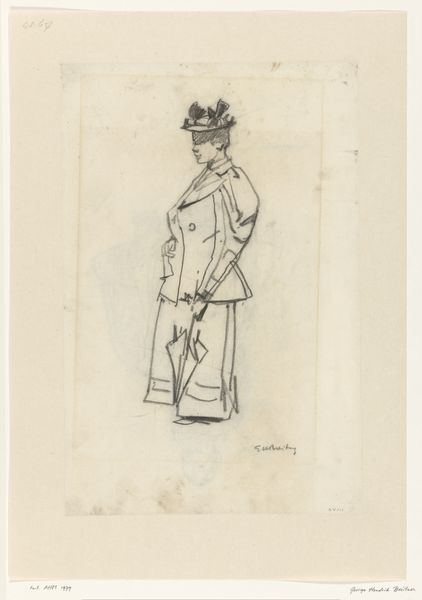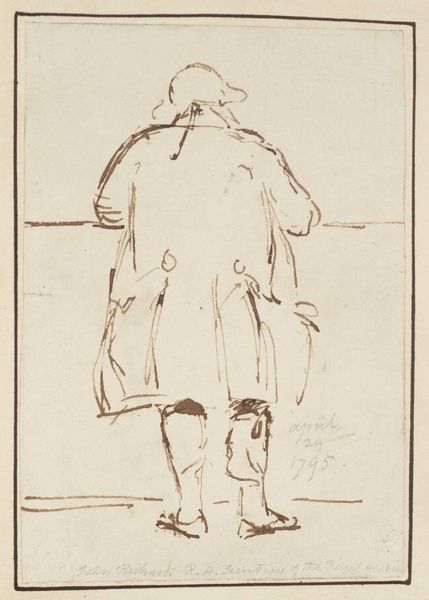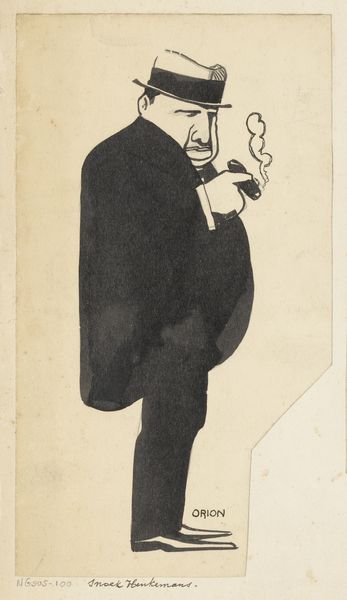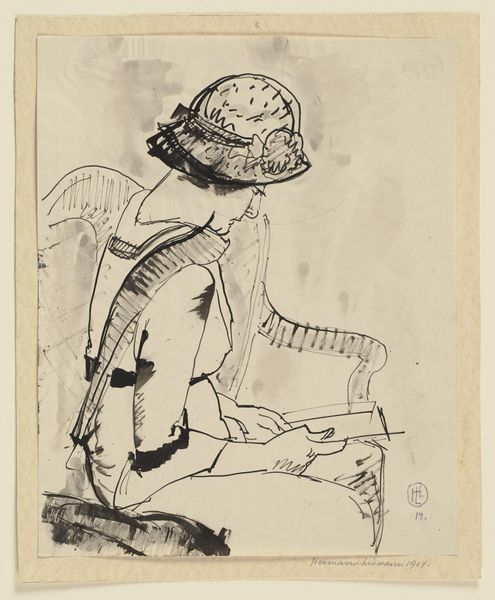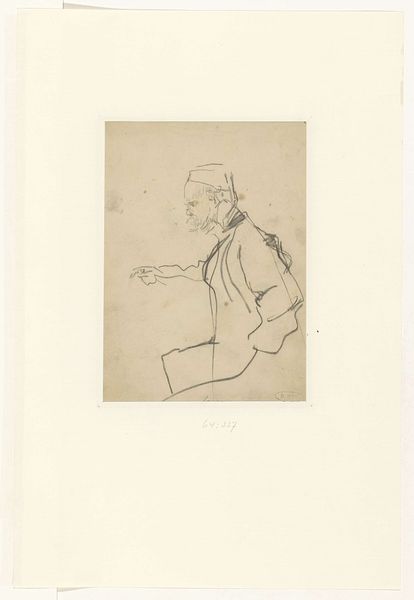
Dimensions: Image: 10 15/16 × 8 1/16 in. (27.8 × 20.5 cm) Sheet: 18 1/4 × 11 7/16 in. (46.3 × 29 cm)
Copyright: Public Domain
Curator: Here we have Henri de Toulouse-Lautrec’s "American Singer," created around 1893. It’s a print, ink and pen on paper. The work seems minimal, like a fleeting impression, doesn't it? Editor: Absolutely. I'm struck by the use of simple lines. There is something deeply sad in it, almost poignant, in this lone figure seemingly caught in a spotlight. It really grabs your attention. What exactly makes this an "American Singer" though? Curator: That's a great question! The term reflects the explosion of nightlife in Paris during that era. It captures this intersection of performers—often Americans—and their impact on the local arts and entertainment industries. This print likely shows one of these individuals at the café concert, but it's also indicative of Toulouse-Lautrec’s broader fascinations with working-class entertainments and those outside typical bourgeoisie life. Editor: Ah, so we see class dynamics intertwined with emerging entertainment cultures. Can we say something about the labor involved in this kind of art production? Was Toulouse-Lautrec part of these scenes as more than an observer? Curator: Definitely. His prints, like this one, would have been relatively accessible to a broader audience through newspapers, magazines and affordable art collections. Also consider that he immersed himself in the lives of those he depicted, not only frequenting these concert halls but also working collaboratively with the printers and craftspeople who realized these images, embracing these reproductive techniques. He seems more ally than just another rich patron looking down. Editor: That’s insightful. It shifts the image's emphasis to collective, performative production and away from some kind of genius insight by a single great artist. Even something in the ink he uses likely connects him, materially, to processes tied to a particular industry during a certain time period. It's great how he puts a face on entertainment workers who often don't receive credit for their essential role. Curator: It is remarkable. Through line and form, the picture emphasizes a sense of momentary performance. He shows how art and identity commingle on the stage. Editor: This artwork highlights the blending of identities, professions, and cultures—challenging preconceived notions around how the "artist" relates to "the working person." That’s important! Curator: It provides insight into an industrial means of making, a singular scene, and more broadly into Paris at this moment of societal flux. Editor: Right. A brief look provides a way in!
Comments
No comments
Be the first to comment and join the conversation on the ultimate creative platform.
